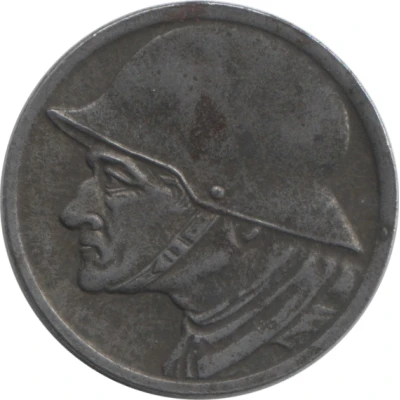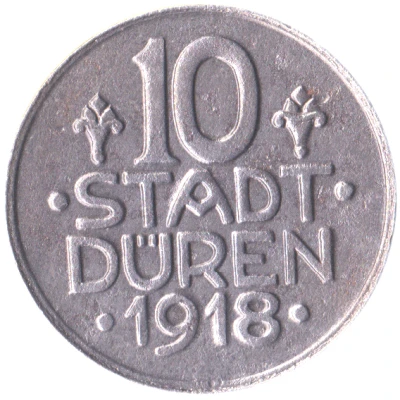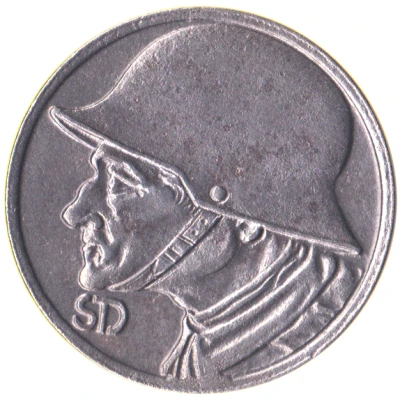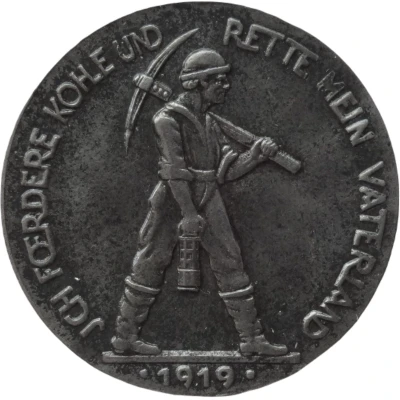


© KaterMurr (CC BY-NC-SA)
10 Pfennigs - Düren
1918 year| Iron | 5.6 g | 23.8 mm |
| Issuer | City of Düren (Prussian province of Rhine) |
|---|---|
| Type | Standard circulation coin |
| Year | 1918 |
| Value | 10 Pfennigs (10 Pfennige) (0.10) |
| Currency | Mark (1914-1924) |
| Composition | Iron |
| Weight | 5.6 g |
| Diameter | 23.8 mm |
| Thickness | 1.8 mm |
| Shape | Round |
| Technique | Milled |
| Orientation | Medal alignment ↑↑ |
| Demonetized | Yes |
| Updated | 2024-10-04 |
| Numista | N#223418 |
|---|---|
| Rarity index | 26% |
Reverse
German soldier
Edge
Plain
Interesting fact
The 10 Pfennigs - Düren 1918 coin was issued during a time of economic turmoil in Germany, known as the "Inflationary Period" (1914-1923). During this time, the value of the German mark (the national currency) plummeted, and prices for everyday goods skyrocketed. As a result, many Germans turned to alternative forms of currency, such as local emergency currencies like the 10 Pfennigs - Düren 1918 coin, which was issued by the City of Düren in 1918. This coin is particularly interesting because it was made of iron, which was a common material used for coinage during this time period due to its durability and affordability. The 10 Pfennigs - Düren 1918 coin weighs 5.6 grams, which is relatively heavy for a coin of its size. This weight was likely chosen to ensure that the coin would be durable and difficult to counterfeit. Overall, the 10 Pfennigs - Düren 1918 coin is a fascinating piece of history that highlights the economic challenges faced by Germany during the Inflationary Period. Its unique composition and design make it a valuable collector's item for numismatists and historians alike.
Price
| Date | Mintage | VG | F | VF | XF | AU | UNC |
|---|---|---|---|---|---|---|---|
| 1918 | 1100750 | - | - | - | - | - | - |
Values in the table are based on evaluations by sales realized on Internet platforms. They serve as an indication only for 10 Pfennigs - Düren 1918 coin.



